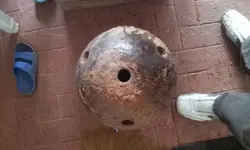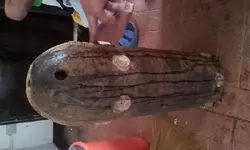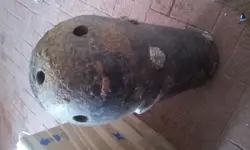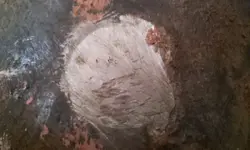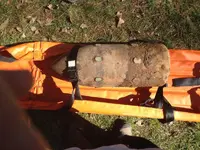BigCypressHunter wrote:
> What would the value be of such a find?
You already know the following information, but I'll give it for other readers who may not already know it.
The dollar-value of a relic is determined by three factors:
1- Rarity
2- Condition/Completeness
3- Collector Demand/Interest-Level
Many people think Rarity is the most important factor. But in actuality, Number 3 is the most important. For example, let's say you've found a super-rare 1654 Bulgarian coin, and it is in excellent condition. But, there are extremely few collectors of Bulgarian coins.
Now, let's apply those three factors to Coolxam's find.
1- It is rare.
2- Its condition is very good, but it is incomplete (its fuze is absent).
3- It is a Heavy-Caliber artillery shell, from the Spanish-American War. There are
very few collectors of Heavy Artillery projectiles, due to their ponderous weight (you've got to reinforce your house's floor to display your collection), and the high cost of shipping objects which weigh more than 70 pounds. Also, there are very few collectors of Spanish-American War relics, in comparison to the high level of interest in Civil War and World War 2 relics.
Coolxam said he found his Heavy-Caliber artillery shell in the Phillipines. Assuming it is still in that country, shipping it to an American or Spanish artillery shell collector would be very significantly expensive -- probably more than the value of the shell itself. So, his best bet would be to try to find a local (Phillipines) artillery collector. It's probably worth a couple of hundred American dollars. Its value would be higher if its fuze was present, but being absent, the shell is "incomplete" -- and being incomplete always hurts a relic's dollar-value.
> CBG so this was never armed or fired?
> Does it get packed full of gunpowder?
>
http://www.fototime.com/98A3F0971840E3F/orig.jpg
I assume you are asking about the shell in the photo at the link you posted. It is a 3.5"-caliber French "Lead-Studded" shell, from the latter-1800s. A large quantity of them were captured by the US Army in Cuba during the Spanish-American War, and were afterwards sold to the American public as souveneirs by war-surplus dealer Francis Bannerman & Sons in that company's mail-order catalog. (Please note, they are often
incorrectly advertized as being a civil war era Confederate shell!)
The answers to your two questions about the shell at the link (not Coolxam's shell) are:
The lead/antimony studs on its sides do not show compression-marks from a cannon's rifling-grooves, so this one was never fired. Yes, if it had been "armed" it would have been filled with an explosive powder-charge, and a fuze would have been screwed into the fuzehole in the shell's front.



